The JMX Connection Management lets you connect to a JMX-complaint server, such as FMQ-JMX/FES-JMX/FPS-JMX and perform tasks like browsing Server mbeans, monitoring data, changing server properties runtime etc. Changes made using JMX are applied on the server that is running. Some Server configurations such as server ports and memory settings are applied only after restarting the Server. A message dialog box instructing the server to be restarted is displayed whenever a Restart is required.
To log on to the Server, select the JMX Server node. In the Properties view, specify the required connection properties and right-click the node and select Login. After logging in, notice that the JMX tree containing domains (![]() ) and mbeans (
) and mbeans ( and
and ![]() )is displayed, as shown in the figure below.
)is displayed, as shown in the figure below.
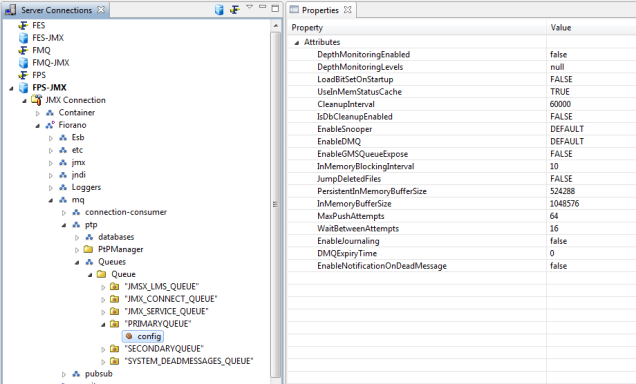
Figure 1: JMX Login node
Using the JMX connection, you can invoke JMX operations or change the Server properties at runtime.
Invoking JMX operations
To invoke an operation, right-click any MBean and select View Operations. The View Operations option is present only if the MBean has at least one operation present in it, as shown below.
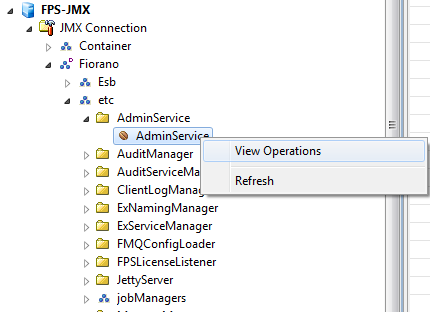
Figure 2: View JMX operations
A dialog box is displayed listing operations on the left and operation information on the right, as shown below.
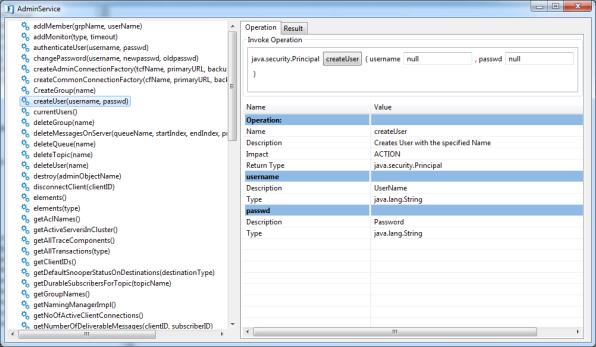
Figure 3: Operation information dialog
Each operation is shown as a function along with the return type, operation name and function parameters. The signature for this function is as below:
Operations, parameters descriptions and types are shown in the dialog box. Add values for the parameters and click the button carrying the operation name to invoke the operation.

Figure 4: Operation signature
The result gets displayed in the Result tab.

Figure 5: Result of operation invocation
Points to note
- If the result of invoking an operation is of a complex object consisting of java bean information, click the button corresponding to it, which launches a java bean editor where all object information gets displayed. An example of this is shown below.
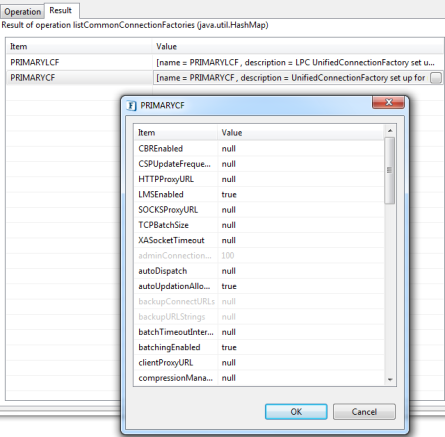
Figure 6: Result showing bean information
- If an operation parameter is a complex known object, the java bean editor will be displayed where you can add values required to invoke the operation. An example of this is shown below.
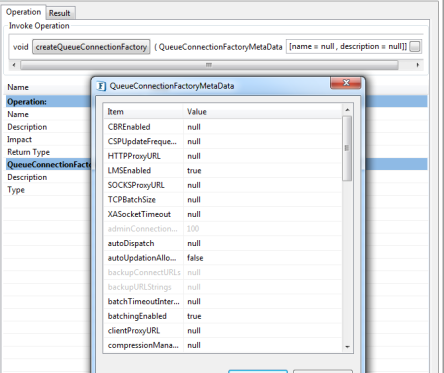
Figure 7: Input parameter with bean editor
- If an operation parameter is a complex unknown object, then the parameter and the operation invoke button are disabled and hence unable to invoke the operation. An example of this is shown below.

Figure 8: Operation parameter without bean editing support
Changing Server Properties
Server properties can be changed at runtime. Select an MBean. In the Properties view, change the value of the property that requires modification, as shown below.
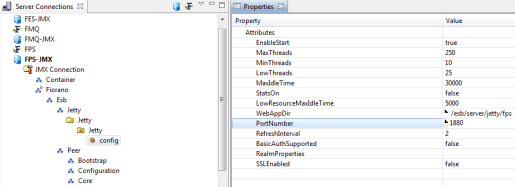
Figure 9: MBean attributes/properties
After making the changes, right-click the JMX Server and select Save Configurations to save the changes.
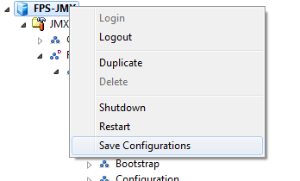
Figure 10: Saving configuration changes
Some properties are applied to Server that is running. However, some Server configurations such as server ports and memory settings are applied only after restarting the Server. When the Server requires a Restart, a message indicates the same while making changes.
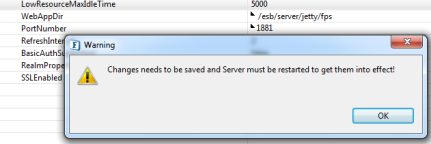
Figure 11: Dialog box displaying server restart warning